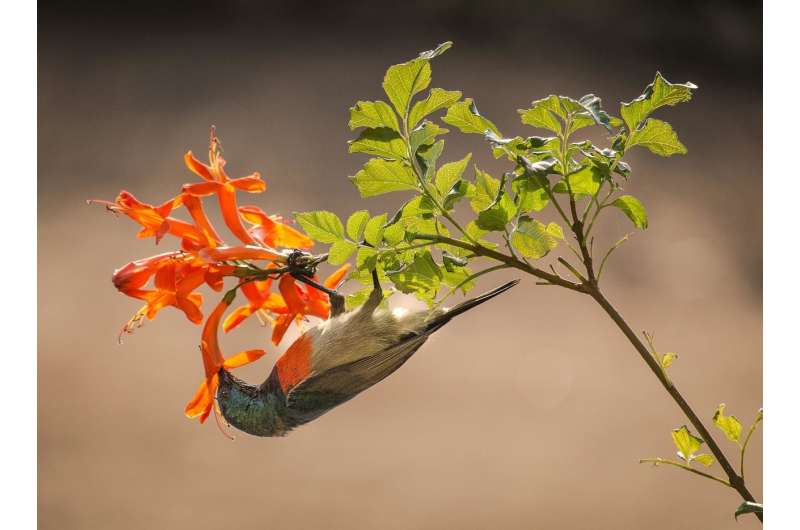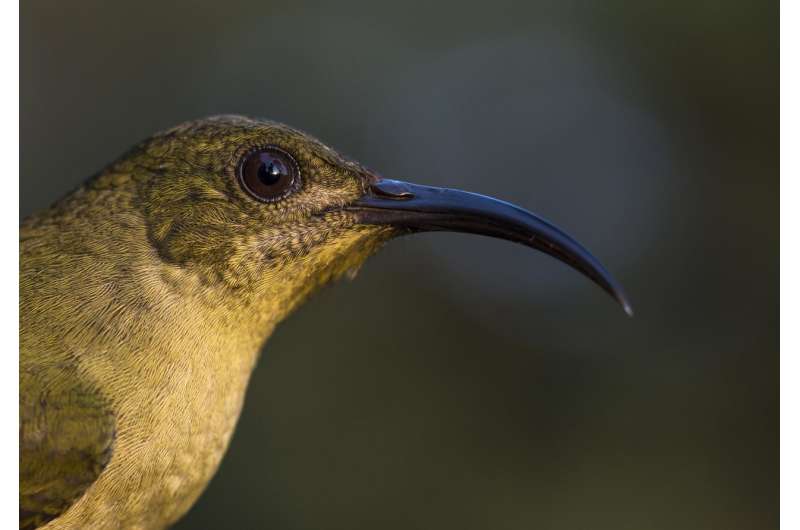Animals and plants jointly coexist

The tropical rainforest, with its permanently wet climate, brims over with an abundance of plant species. Flowers of all sizes with shallow to deep tubes offer a wide variety of food sources to pollinators. Sunbirds, for example, developed long, down-curved beaks enabling them to reach the nectar at the bottom of long tubes. But who is the leading actor in this interplay of plants and animals?
"Ecosystems with high precipitation typically contain a wide variety of plants and show a high level of functional diversity. The higher this functional diversity, the more their animal partners are able to specialize on particular plant species. The plants therefore serve as the deciding factor for the animals' specialization," explains Dr. Jörg Albrecht of the Senckenberg Biodiversity and Climate Research Center, lead author of a new study regarding this topic.
Albrecht and his colleagues from Germany, Switzerland and Tanzania observed and analyzed almost 15,000 interactions between plants, their pollinators and their seed dispersers over a period of five years. The study area comprised survey plots from the foothills of the Kilimanjaro up to the mountain's summit.
Since 2010, an international team of scientists in the joint project "Kilimanjaro ecosystems under global change," sponsored by the German Research Foundation, has been working here to find out how climate and land use affect the biological diversity on Africa's tallest mountain.

However, on Kilimanjaro, it is not always the plants that make the rules. The newly published study shows that there also exist climatic conditions in which the animals set the agenda. Albrecht explains, "Mean temperature is more important than precipitation for animal diversity. In cold climates, animal species tend to resemble each other more closely and show a lower level of functional diversity. Therefore, in cold regions, plants are not able to specialize on specific animal partners and frequently interact with the same species."
Since the amount of precipitation and the mean temperature in many areas is expected to change due to climate change, researchers suspect that changes will also occur in the networks between plants and animals. "Depending on how the climate will change in a particular region, either plants or animals could drive the structure of these networks in the future. A change in the flora could thus also have an impact on the animal partners of the plants," explains the study's senior author, Dr. Matthias Schleuning of the Senckenberg Biodiversity and Climate Research Center.
According to the authors, the ability of species to adapt to new environmental conditions is not only determined by the species themselves, but also depends on the responses of their plant or animal partners. Precise predictions regarding future changes in biodiversity are essential to mitigate future environmental changes caused by climate change. "In order to better predict how species and ecological communities will respond to global change, it is important to consider the environmental conditions together with the mutual interdependencies between species," says Matthias Schleuning.
More information: Jörg Albrecht et al. Plant and animal functional diversity drive mutualistic network assembly across an elevational gradient, Nature Communications (2018). DOI: 10.1038/s41467-018-05610-w
Journal information: Nature Communications



















